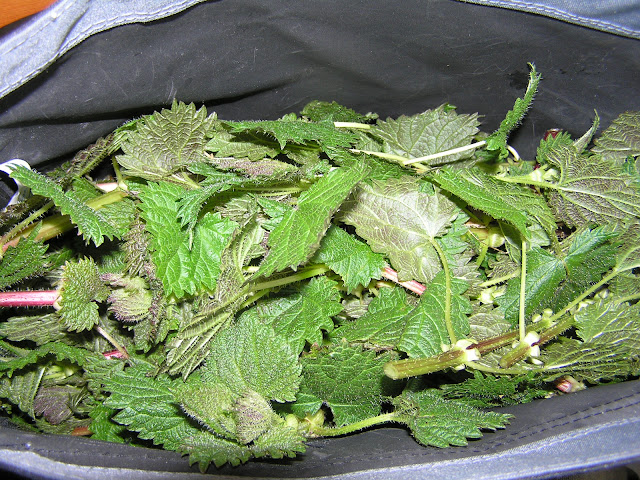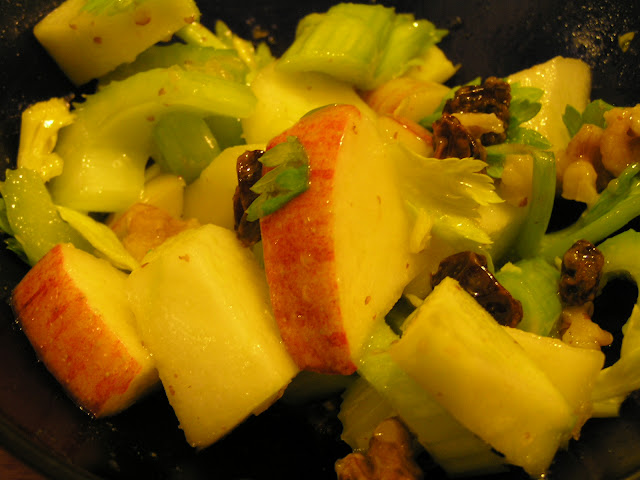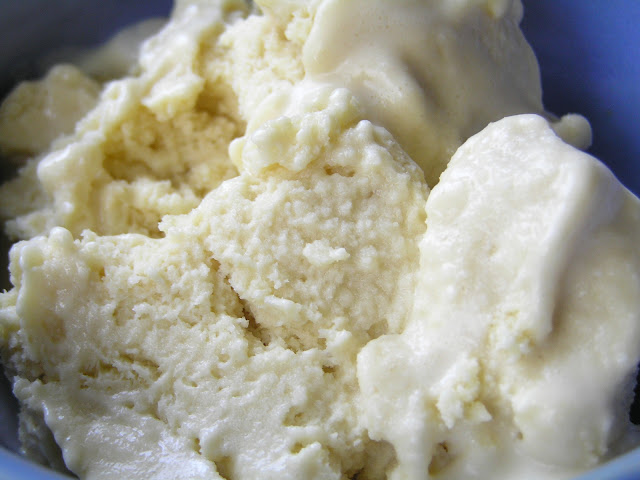You Don't Have to Go to the Store
Unless you live in some town with a truly great natural food co-op that really benefits the community (Olympia Food Co-op, I'm talking about you) there is really no virtue in going to the grocery store. For most of us, our food buying options include a selection of major chain stores, most of which now host a small section of natural foods... but the money you spend there doesn't stay within your community. A tiny portion of their income is used to pay the employees, sure, but the vast majority is siphoned right out of your world and into the pockets of CEO's who certainly don't need your money.
So, what other options are there? You know about farmers' markets. In some communities, they are available year round, daily or several times a week, which is wonderful! With our local farmers' market only open once a week during certain months of the year, we don't find that to be a convenient option most of the time, so for the last year we've shopped from a local Tacoma-based company, Terra Organics, that delivers a fully customizable CSA (Community Supported Agriculture- we essentially buy a share of a farm's production each year). Along with the CSA, this distributor will deliver any fresh fruits and veggies that we'd like, chosen from their website each week. They are all organic, and the website tells us the state or country of origin so if we only want locally grown, or only US grown foods, it's easy to do. At a brick & mortar store it's discouraging trying to check everything for it's source. Also, their website has more varieties of organic produce than I've been able to get anywhere else.
There are tons of CSAs available, and I'm sure many of them are fully customizable like ours. With the first two CSAs that we tried though, it was "you get what you get" each week, and even though we only had a half-share, we were getting more of certain veggies than we knew what to do with (this was before I knew how to turn an armful of greens into a delicious smoothie!) When you grow some of your own food, a customizable CSA is even more important, since you don't want a weekly delivery of a bunch of stuff you're already growing in quantity. Besides not getting a bunch of stuff you don't know how to, or even want to, use, the other advantage of a customizable order is that your trips to the grocery store will become very reduced, since you can usually get all the produce you need this way.
We literally get all our fruits and veggies (besides the few that we manage to grow-- still working on developing our urban farm) from Terra Organics each week (tell 'em Mellow sent you and we'll both get a discount when you sign up!) They have several types of boxes available, but all of them are customizable. We get the "Pacificic NW" box, so we can at least start out local (I still order mangoes, avocados, and bananas each week, and I probably will as long as they keep trucking them in!)
Most of the rest of our foods come from Azure Standard, an Oregon based supplier of natural foods. For a minimum monthly purchase, they deliver to our local drop location with no handling fee. Our pantry has been completely transformed through shopping at Azure; while they do sell things in small amounts, it's cheaper per pound to buy in bulk, so we end up buying grains, seeds, beans, as well as salt, sugar, and baking soda, and food for our chickens & bunnies, in huge 20, 30, or 50 lb sacks. My pantry used to be stocked with tons of packaged food, cans and boxes of things from the grocery aisles; now I've got these simple white buckets stacked and labeled, full of the pure whole foods that I prefer to be eating.
We are saving a great deal of money, and eating far healthier than we did when going to the grocery store was a weekly occurrence for us. We make everything from scratch rather than being tempted by packaged convenience foods. If we want something, we figure out how to make it rather than driving over to the store to pick up some overpackaged, overpriced, factory produced food product. They're only trying to replicate homemade; we can make the real thing. In addition, we produce almost no garbage now that we're not shopping at a grocery store, which is good because we ditched our garbage service!
Every two or three months we still head to Trader Joe's for a ridiculous amount of cheese and butter, a whole chicken for our cat, and a tiny cup of free coffee. We haven't eliminated the grocery trip altogether, but it sure beats the weekly trip to the store we used to make for fresh produce and everything else.
Below are Amazon Affiliate Ads. Any purchase made through them helps support our family. Thanks in advance!
So, what other options are there? You know about farmers' markets. In some communities, they are available year round, daily or several times a week, which is wonderful! With our local farmers' market only open once a week during certain months of the year, we don't find that to be a convenient option most of the time, so for the last year we've shopped from a local Tacoma-based company, Terra Organics, that delivers a fully customizable CSA (Community Supported Agriculture- we essentially buy a share of a farm's production each year). Along with the CSA, this distributor will deliver any fresh fruits and veggies that we'd like, chosen from their website each week. They are all organic, and the website tells us the state or country of origin so if we only want locally grown, or only US grown foods, it's easy to do. At a brick & mortar store it's discouraging trying to check everything for it's source. Also, their website has more varieties of organic produce than I've been able to get anywhere else.
There are tons of CSAs available, and I'm sure many of them are fully customizable like ours. With the first two CSAs that we tried though, it was "you get what you get" each week, and even though we only had a half-share, we were getting more of certain veggies than we knew what to do with (this was before I knew how to turn an armful of greens into a delicious smoothie!) When you grow some of your own food, a customizable CSA is even more important, since you don't want a weekly delivery of a bunch of stuff you're already growing in quantity. Besides not getting a bunch of stuff you don't know how to, or even want to, use, the other advantage of a customizable order is that your trips to the grocery store will become very reduced, since you can usually get all the produce you need this way.
We literally get all our fruits and veggies (besides the few that we manage to grow-- still working on developing our urban farm) from Terra Organics each week (tell 'em Mellow sent you and we'll both get a discount when you sign up!) They have several types of boxes available, but all of them are customizable. We get the "Pacificic NW" box, so we can at least start out local (I still order mangoes, avocados, and bananas each week, and I probably will as long as they keep trucking them in!)
Most of the rest of our foods come from Azure Standard, an Oregon based supplier of natural foods. For a minimum monthly purchase, they deliver to our local drop location with no handling fee. Our pantry has been completely transformed through shopping at Azure; while they do sell things in small amounts, it's cheaper per pound to buy in bulk, so we end up buying grains, seeds, beans, as well as salt, sugar, and baking soda, and food for our chickens & bunnies, in huge 20, 30, or 50 lb sacks. My pantry used to be stocked with tons of packaged food, cans and boxes of things from the grocery aisles; now I've got these simple white buckets stacked and labeled, full of the pure whole foods that I prefer to be eating.
 |
| Nik just built these great shelves for our pantry, which is really just a cool, dark corner of our garage. |
We are saving a great deal of money, and eating far healthier than we did when going to the grocery store was a weekly occurrence for us. We make everything from scratch rather than being tempted by packaged convenience foods. If we want something, we figure out how to make it rather than driving over to the store to pick up some overpackaged, overpriced, factory produced food product. They're only trying to replicate homemade; we can make the real thing. In addition, we produce almost no garbage now that we're not shopping at a grocery store, which is good because we ditched our garbage service!
Every two or three months we still head to Trader Joe's for a ridiculous amount of cheese and butter, a whole chicken for our cat, and a tiny cup of free coffee. We haven't eliminated the grocery trip altogether, but it sure beats the weekly trip to the store we used to make for fresh produce and everything else.
Below are Amazon Affiliate Ads. Any purchase made through them helps support our family. Thanks in advance!

























